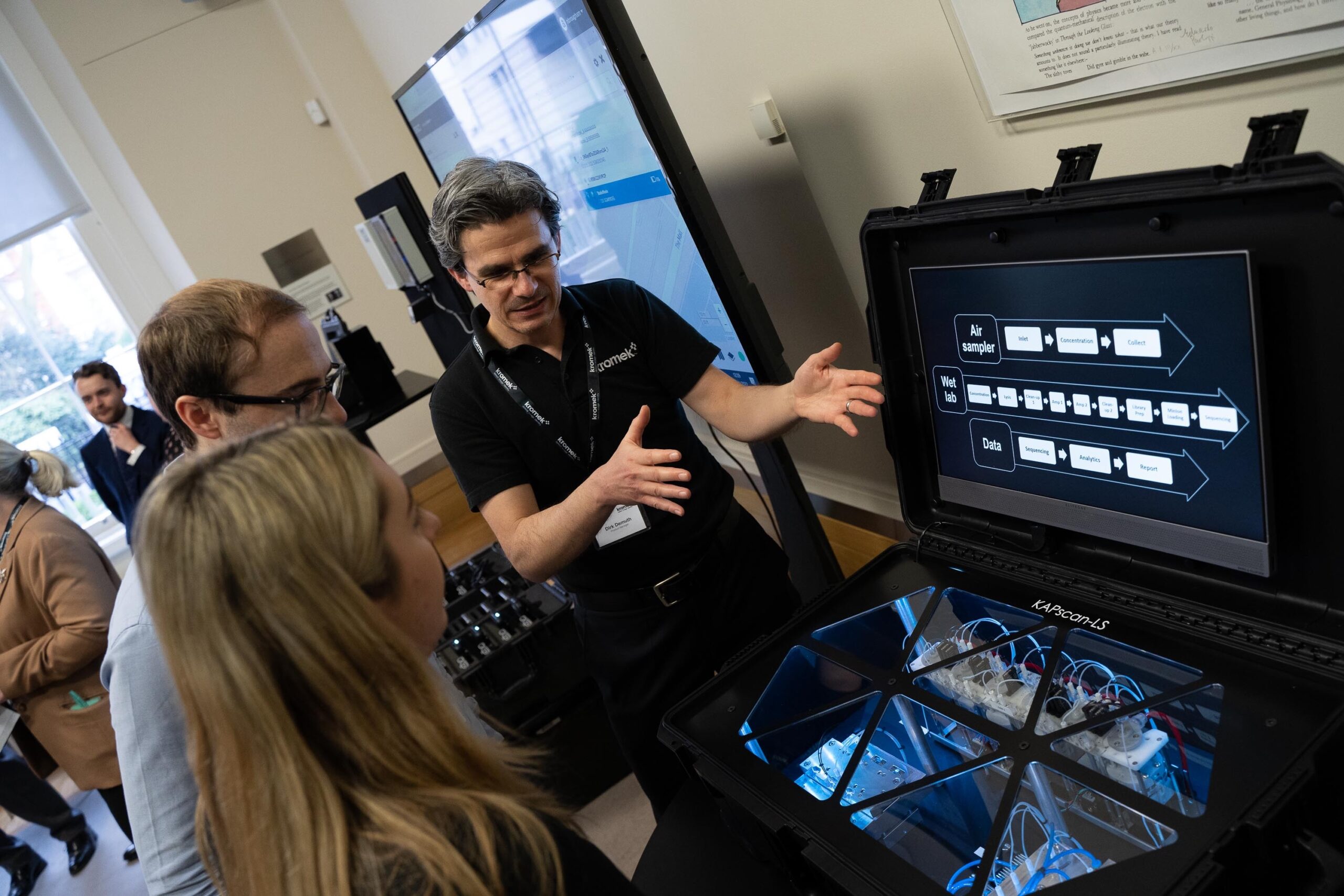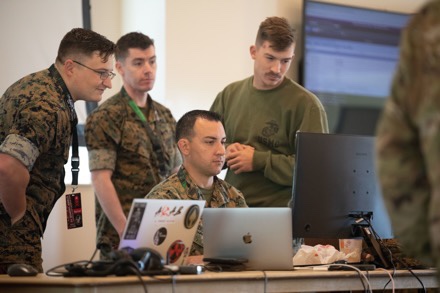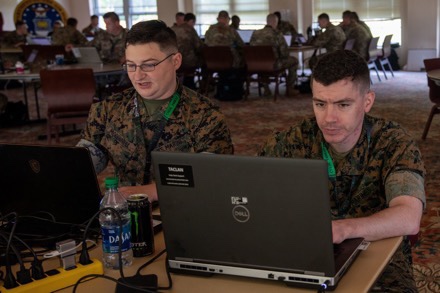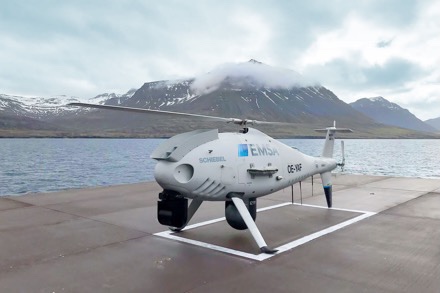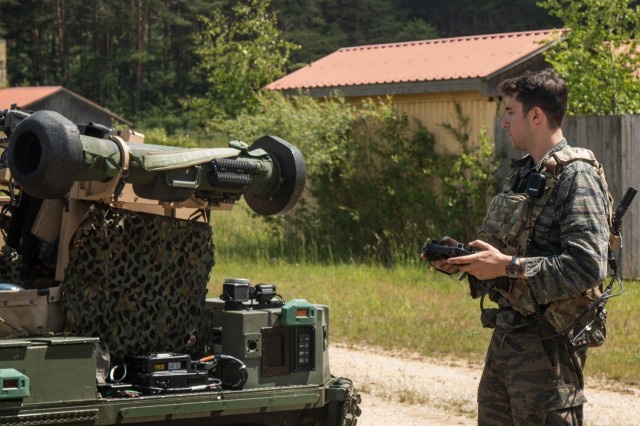
HOHENFELS, Germany — The U.S. Army’s most recent Soldier Operational Experiment, or SOE, confirmed the value position of Robotics and Autonomous Systems, also known as RAS, in a coalition environment. This is a position that provides their human counterpart with the following benefits: enhanced lethality, improved options, and a degraded threat.
Project Origin, a technology demonstrator that supports the Robotic Combat Vehicle, or RCV, development effort and other RAS programs, enabled the OPFOR at the Joint Multinational Readiness Center to expose the rotational unit to capabilities that our adversaries are developing while at the same time evaluating emerging technology in a relevant tactical environment. This SOE provided the Army with Soldier feedback and technical data required to inform the RCV’s requirements and develop use cases that will enable future formations to dominate the dynamic, lethal, and contested battlefields of 2030 and beyond.
During the SOE, U.S. Army DEVCOM Ground Vehicle Systems Center and its industry partners from General Dynamics Land Systems integrated the latest robotic technology into both OPFOR and the rotational unit’s formations. While the rotational unit consisted of a diverse number of NATO countries partnering with U.S. forces primarily from the 3d Infantry Division, the OPFOR comprised of Soldiers assigned to 1st Battalion, 4th Infantry Regiment.
The OPFOR employed Project Origin in various missions ranging from breaching obstacles to raiding Forward Arming and Refueling Points, also known as FARPs, during Operation Combined Resolve XVII. Similar to last year’s SOE at the Joint Readiness Training Center, the Project Origin team concluded that the grueling operational tempo and dynamic environments associated with combat training centers enable them to learn more in two weeks than they do during an entire year of smaller-scale experiments. In addition to integrating Project Origin into the rotation, the Ground Vehicle Systems Center — or GVSC — also fielded the Army’s Autonomous Transport Vehicle, or ATV, to evaluate the Army’s autonomous logistic resupply capability in this challenging multinational environment.
Regarding Project Origin, the OPFOR employed the platforms to support human maneuver by leveraging payloads such as the Common Remotely Operated Weapon Station Javelin, smoke generator, tethered unmanned aerial system, and electronic warfare components. Meanwhile, GVSC enabled the rotational unit with un-crewed logistic resupply missions through the use of the ATV robotic Palletized Load System vehicles. These robotic resupply vehicles reduced the number of Soldiers required to transport the equipment and materiel necessary to support both U.S. forces and Soldiers from 12 additional NATO countries during the rotation.
Both Project Origin and ATV exposed 5,600 Soldiers from the 3rd Infantry Division and NATO allies to the capabilities and benefits of RAS. In Project Origin’s case, the rotational unit learned that U.S. adversaries’ RAS can achieve lethal effects and degrade their combat power before they make contact with actual humans. Further, the rotational unit learned that RAS enables a formation to employ enabling combat effects such as obscuration and aerial surveillance instantaneously.

Project Origin’s modular mission payloads provided the OPFOR with these capabilities at the point of need without having to wait for their higher headquarters to processes and prioritize similar requests with available assets. The OPFOR’s FARP raid was one such example. During this mission, the OPFOR raided a FARP to prevent the rotational unit’s AH-64 helicopters from interdicting an on-going OPFOR air assault. Project Origin’s operators identified an opportunity to employ the obscuration payload and “smoked out” the entire FARP. As a result, the AH-64s could not take off until the smoke cleared and thus prevented them from interdicting the OPFOR air assault.
An added benefit of a combat training center rotation like this one is that the Project Origin team identifies scenarios or instances during which Origin achieved significant success, then “red teams” those moments to develop “Counter RAS” concepts.
“Our adversaries are developing these systems, so the Army must learn how to defeat them in training environments prior to meeting them in combat,” said Maj. Cory Wallace, Robotic Requirements Lead with the Next Generation Combat Vehicle Cross Functional Team. “Further, the Origin team identifies the capability or use case that contributed to Origin’s success and then leverages them to shape and inform the RCV program of record,” he said.
The JMRC SOE highlights the importance of considering how RAS operates in a coalition environment and where operational and technical interoperability are paramount.
“The United States Army European Command asked GVSC to bring Project Origin robots to this JMRC rotation in order to find out if the Army is on the right path for developing technology and behaviors for use in the European theater of operation, as well as allowing our Coalition forces to fight against unmanned ground systems,” said Todd Willert, GVSC’s Project Origin Program Lead.
“Technology is not slowing down, so we have to make sure we’re on the cutting edge and rapidly developing new capabilities that align with our operational units spread across the world.
“Project Origin, through Soldier Touchpoints, is defining the future of these revolutionary systems through informing required capabilities and transitioning technology and behaviors to the Army’s robotic programs,” Willert said.
Willert defined the most memorable engagement of the rotation as one during which “we heard a Soldier from the rotational unit yell, ‘I am attacking it, but it’s not human,’ while engaging one of the Origin platforms.”
The criticality of the software driving the RCV’s development effort cannot be overlooked. Project Origin and the ATV program enable the Army to collect Soldier feedback and technical data to direct its software development efforts so that they align with user requirements.
During Combined Resolve XVII, GVSC allowed Soldiers to evaluate the effectiveness of the Modular Open Systems Approach (MOSA) based autonomy, Robotics Technology Kernel (RTK), and a common user interface known as Warfighter Machine Interface (WMI). GVSC collected feedback from the OPFOR employing the Origin platforms as well as the rotational unit who conducted logistic resupply missions using ATVs.

“Building a MOSA-based, common approach to ground autonomy software lets the Army collaborate with a wide range of industry-leading partners while controlling current and future costs,” said Bernard Theisen, GVSC’s Division Chief for Ground Vehicle Robotics. “RTK, the Army’s library of modular software package, can be tailored to meet the needs of autonomous ground platforms. Autonomy—at various levels—offers great opportunity for different platforms to perform different tasks that improve Soldier safety and reduce cognitive burdens.”
“Advances in ground robotics and autonomy will provide Army formations new capabilities that will help achieve its goals for Multi-Domain Operations,” Theisen said. “GVSC’s autonomy projects such as Project Origin and ATV have shown Army leaders so much about what autonomy can do, which allows them to make informed decisions about what the force needs in this space going forward.”
Finally, Combined Resolve XVII highlights the benefits of the partnership between industry and the Army’s research centers.
“This partnership is imperative to achieving the collective goals associated with the Army’s modernization efforts. Having our industry partners integrated in the process enables them to identify issues, develop potential solutions and deliver better reliability during future experiments,” Wallace said.
The Army has learned from previous modernization efforts that industry must integrate into the process from the development of draft requirements to the delivery of the final product. Project Origin’s success is a testament to this methodology.
Combined Resolve XVII is but a single event in the Army’s collective campaign of learning that leverages multiple SOEs in both CONUS and OCONUS environments to collect Soldier and commander feedback as well as technical data to develop the capabilities that future formations require to dominate multiple domains on tomorrow’s battlefields.
“This aggressive experimentation approach speaks to the fundamental approach of the Army’s modernization effort which places the user as the focal point of the development process,” Wallace said. “The Army then continues to iterate until the user is satisfied in order to ensure that future formations have the equipment necessary to achieve tactical relevance in any operating environment.
“Speaking plainly, equipment that is not useful or reliable rarely leaves the motor pool and wastes money and time during its development. Prototypes and theoretical use cases are interesting, but they are meaningless until we give them to Soldiers to use in the mud and rain in the most brutal operating environments we can find. We cannot conclude that we built something right if it does not work in the worst conditions. We must test in relevant multinational environments to build towards operational and technical interoperability. Opportunities such as JMRC provide the Army with these opportunities and will allow us to win tomorrow’s fight by building today’s equipment right,” Wallace said.
By Jerome Aliotta
